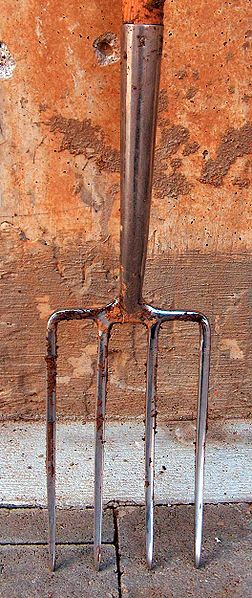
I’ve never claimed to anything but a hobby gardener at best and even that’s to be debated at times. Sadly, as a hobby gardener I’ve purchased my fair share of dumb tools that promised to make my life easier. Time and again I’ve realized that there are only a few worthwhile gardening tools that I bother to use.
One of these tools is the trusty garden fork (also known as a spading fork) and not to be confused with a pitch fork, another tool I’m slightly fond of but not the subject of this post. FYI, according to Wikipedia a garden fork and pitch fork differ as such:
“Garden forks are slightly different from pitchforks, which are used for moving loose materials such as piled hay, compost, or manure. Garden forks have comparatively a fairly short, usually wooden handle, with a “D” or “T” end. Their tines are usually shorter, flatter, thicker, and more closely spaced.”
Basically, a garden fork is shorter and sturdier than a pitch fork, but there’s a bit more to it than that…
In particular, the “D” shaped handle of a garden fork makes it, IMO, significantly more useful than a pitchfork around the garden because the handle can be easily grasped such that you can apply leverage to twist and work the ground, from loosening soil to working plants or weeds out of the ground at the end of a growing season and even during the season too.
According to the OSU Extension Service:
“…’The single most useful, versatile tool for tillage and preparing the soil is a spading fork, a robust pitchfork-type tool,’ Miller said. This long-handled or D-handled tool helps to “fluff” up the soil to prepare it for planting and also mixes compost, lime, and fertilizer at least eight to 12 inches into the soil – if you add amendments before you dig. This tool also makes it easier to pull out weeds and get vegetable plants ready for the compost bin.”
Well, I doubt I could say it any better myself. If you want to save your back when working the soil–especially during preparation and at the end of the growing season–a garden fork is a truly useful tool, and one that you should include in your go-to set of gardening tools.
Hope this helps!

Leave a Reply